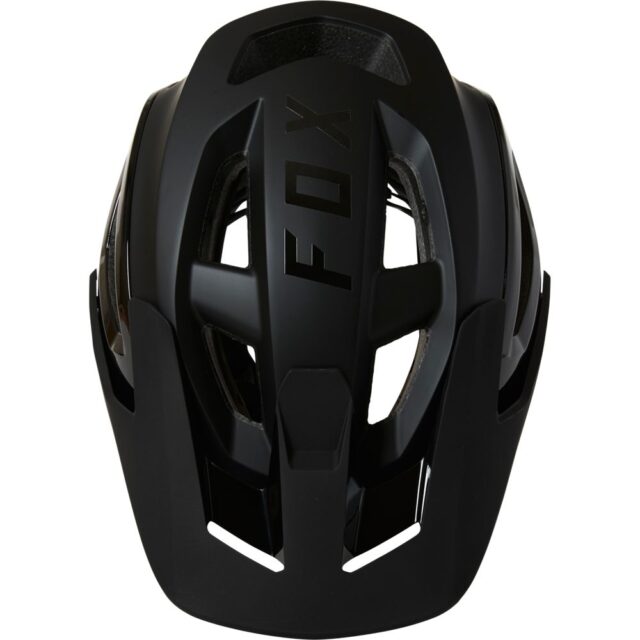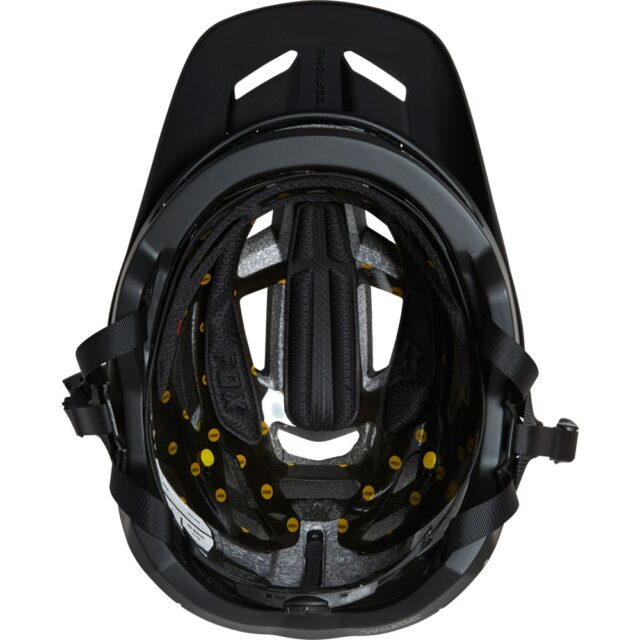Fox Speedframe Pro Helmet
Test Location: Gunnison / Crested Butte CO, and others
Duration of Test: 2.5 months
Size Tested: Large
Blister’s Measured Weight (size L): 417 g / 14.7 oz
MSRP: $160

Intro
Here at Blister, we’ve been thinking a lot about helmet safety of late, and you should check out our current series on the subject, over on our GEAR:30 podcast. The first episode with Ståle Møller of Sweet Protection is already live, and we’ll have several more installments coming in the following weeks.
We’ve also been testing some new helmets, one of which is the Fox Speedframe Pro. It’s a high-end Trail / Enduro helmet that recently received a 5-star safety rating from Virginia Tech. But how does the Speedframe Pro stack up to the competition on the trail, and who should be most interested in this offering from Fox? Read on to find out.
The Design
For the most part, the Speedframe Pro fits neatly into the proverbial mold for a modern, high-coverage, open-face helmet. There’s a dial adjustment system at the back of the helmet, deep coverage around the back and sides of the head, and a large, adjustable visor. The adjustment fit system (Fox calls it “360 Fit”) had four positions for the anchor to sit at the back of the helmet to fine-tune the fit, and unlike some similar systems, wraps around the full circumference of the helmet, instead of using additional anchor points above the temples. The visor is especially large for this sort of helmet, and adjusts to three different positions.
Like most high-end helmets these days, the Speedframe Pro features a MIPS liner and an EPS foam structure with an in-molded shell. Fox uses a dual-density foam construction for the shell, distributing the two different foams as desired for improved impact absorption. There’s also a Fidlock magnetic buckle for the chin strap, along with a clever pair of plastic spreaders that open the straps into a wider V-shape below the ears for extra clearance.






The Speedframe Pro features 19 vents and contouring around the back and sides of the helmet designed to securely hold a goggle strap. The visor sits high enough to easily clear most goggle frames, and the Speedframe Pro is offered in six different colors.
Fox also makes a more basic version of the Speedframe, which shares its overall silhouette with the Speedframe Pro but loses a few of the Speedframe Pro’s features, including the dual-density liner and the Fidlock Magnetic buckle, and comes with a more basic set of inner padding. The base Speedframe retails for $110, while the Speedframe Pro is $160. At $160 the Speedframe Pro is on the more expensive side of things, though compared to the current market, it’s far from the most expensive half-shell helmet out there.
Fit
Overall, the fit of the Speedframe Pro is about average for this sort of high-coverage, MTB-oriented helmet. It’s a touch more “round” (i.e. slightly wider for a given length) compared to the Smith Forefront 2, but less so than the Giro Manifest Spherical and (especially) the Giro Source. The Speedframe Pro’s coverage is deep, especially around the back of the head, but it doesn’t sit quite as low across the brow as either of the Giro helmets mentioned above. Compared to the Forefront 2, coverage is similar, but the Speedframe Pro is a little bulkier / not as low profile. The visor on the Speedframe Pro is also notably longer than that of any of the other helmets mentioned here. It’s one of, if not the biggest visor we’ve tested on an open face helmet, and riders interested in a particularly high-coverage visor should take note.
Of course, as we always say around here when reviewing helmets, proper fit is critical to making sure a helmet protects your head to its full potential, and we’d always recommend trying a helmet on before buying. For me, personally, the Forefront 2 remains the best fitting helmet in this category that I’ve tried on — it really feels like it was molded around my head, specifically — but the Speedframe Pro fits quite well, and I’ve been totally happy with the fit overall.
On the Trail
One of the most obvious traits of the Speedframe Pro is just how well ventilated it is. It’s easily the coolest, best-ventilated helmet that also offers this much coverage that I’ve tried to date, and folks in very hot climates should take note. This exceptional ventilation did bite me in one instance, though — I generally keep my head fully shaved, forgot to put sunscreen on for one particularly sunny, exposed ride, and gave myself a truly horrific set of helmet vent tan lines on the top of my head while wearing the Speedframe Pro. Bald people be warned. As long as you’re not as much of a forgetful doofus as I was, though, you’ll be just fine.
[Editor’s Note: Much to our disappointment, we do not have photo evidence of David’s unique tan lines.]
The liner padding on the Speedframe Pro does a pretty good job of keeping sweat off your brow but is a bit thinner than average across the brow, to make room for a row of vents there. As such, it’s got a bit less capacity to soak up a ton of sweat than some other helmets — notably the Giro Manifest Spherical, in particular — and can therefore get saturated and start to drip a bit faster than average. The padding is soft and comfortable, and as with most modern helmets, can be removed and washed if needed.
There’s also an appreciable amount of movement and noise from the MIPS liner in the Speedrame Pro — nothing totally out of the ordinary, but a bit more than with the Smith Forefront 2, and (especially) the Giro Manifest Spherical, which is nearly silent due to the unique layout of its MIPS Spherical system. Check out our full review for the details on that. If you’re especially fussy about noise and movement from MIPS liners, the Speedframe Pro wouldn’t be my first choice, but I doubt most people will care.
There’s also a slight quirk with the visor on the Speedframe Pro — it’s pretty easy to accidentally adjust the height differently on the left and right sides. The visor is large and flexible enough to accommodate an asymmetrical setting without much fuss. It’s not a big deal but can look a little goofy, and takes some slight care to keep things even when moving the visor around.
Overall though, the Speedframe Pro is a comfortable helmet — especially for people who prioritize excellent ventilation — and has been pleasant to use in my time with it. I’ve managed to not hit my head in the Speedframe Pro so far (knock on wood) but the top marks it received from Virginia Tech’s independent testing and generally pretty broad coverage provide some extra peace of mind.
The Bottom Line
The Fox Speedframe Pro is an especially well-ventilated, broad-coverage, open-face helmet with an excellent safety rating from Virginia Tech and a somewhat lower price than many of its top-tier competitors. At $160, it’s still not cheap — the more basic Speedframe retails for a more modest $110 — but the Speedframe Pro comes with a lot of top features only found on more expensive models and is well worth a look if it fits your head, especially if great ventilation is a top priority.


